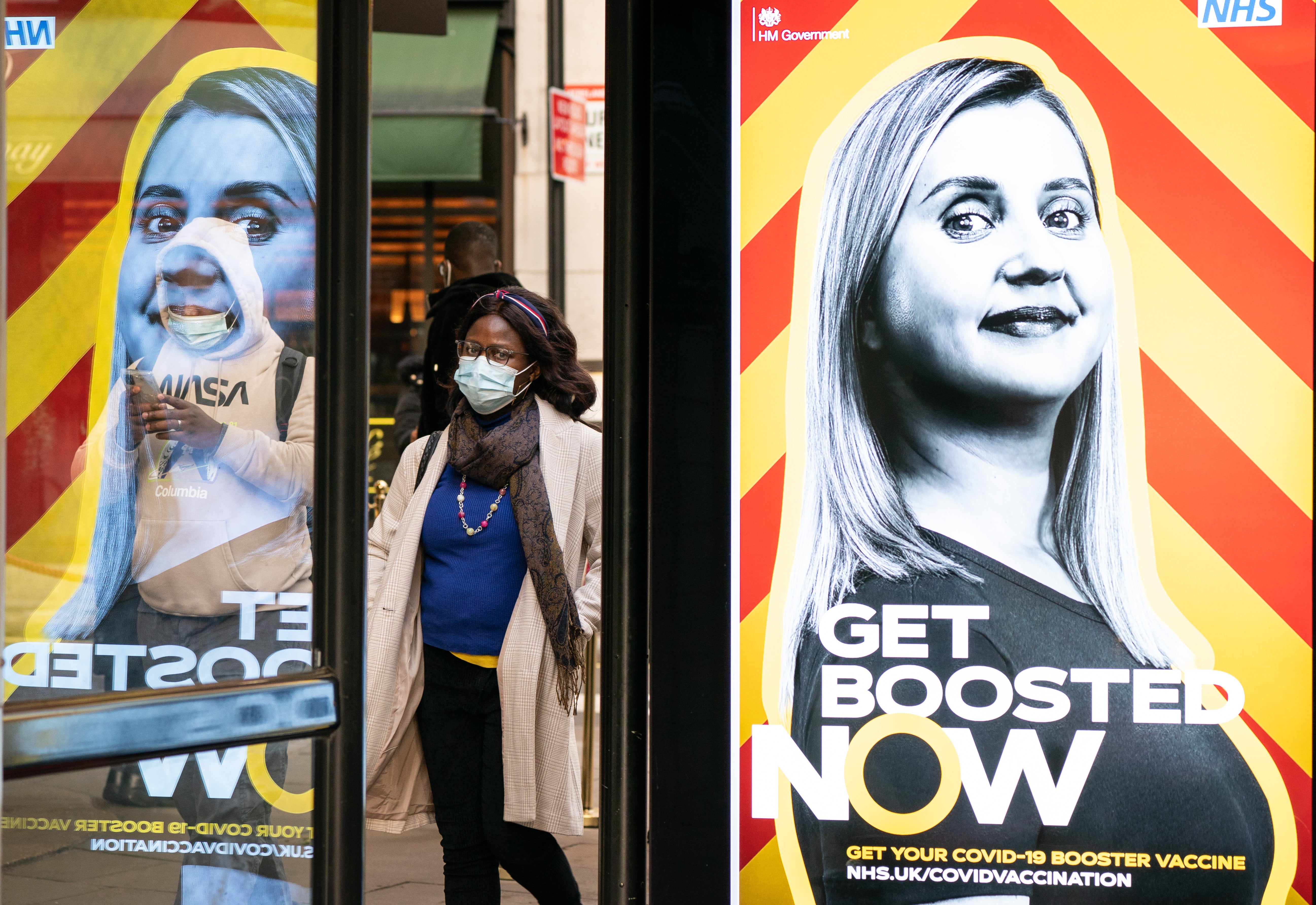Three quarters of people with cold symptoms are likely to have Covid – study
The study also found that cases were ‘rising sharply’ among those aged 55 to 75.

Your support helps us to tell the story
From reproductive rights to climate change to Big Tech, The Independent is on the ground when the story is developing. Whether it's investigating the financials of Elon Musk's pro-Trump PAC or producing our latest documentary, 'The A Word', which shines a light on the American women fighting for reproductive rights, we know how important it is to parse out the facts from the messaging.
At such a critical moment in US history, we need reporters on the ground. Your donation allows us to keep sending journalists to speak to both sides of the story.
The Independent is trusted by Americans across the entire political spectrum. And unlike many other quality news outlets, we choose not to lock Americans out of our reporting and analysis with paywalls. We believe quality journalism should be available to everyone, paid for by those who can afford it.
Your support makes all the difference.Three quarters of people with new cold-like symptoms are likely to have Covid but exponential case growth seems to have stopped, scientists have said.
According to new analysis, the ZOE Covid Study estimates that 75% of people experiencing new cold-like symptoms are likely to have symptomatic Covid-19.
This is up from around 50% last week, with the study reporting that the data was showing a fall in the number of non-Covid “colds” and a rise in symptomatic coronavirus infections.
It also said that the incidence figures show there are currently 192,290 new daily symptomatic cases of Covid-19 in the UK on average, based on test data from up to three days ago.
This is up 33% from the 144,284 reported last week.
The study also found that while the rise in cases appeared to be slowing in the 0 to 55 age groups it was “rising sharply” in the 55 to 75-year-old groups.
It said that this was “worrying” because this older age group was more at risk of needing hospital treatment.
Dr Claire Steves, scientist on the ZOE Covid Study app, said that while the number of daily new symptomatic Covid cases was more than double what it was this time last year, exponential growth appeared to have stopped.
But the reader at King’s College London said that symptoms such as a sore throat, headache, and runny nose needed to be added to the Government list of Covid symptoms as soon as possible.
She added: “The number of daily new symptomatic Covid cases are more than double what they were this time last year and we are just a day or two away from hitting over 200,000.
We want to see symptoms like sore throat, headache and runny nose added to the list as soon as possible
“However, the exponential growth in cases appears to have stopped, and the rise is more steady.
“Hospitalisation rates are thankfully much lower than this time last year, but they are still high, especially in London.
“It’s good news to see that fewer people are newly sick than a few weeks ago.
“However, the fact that 75% of new cold-like symptoms are Covid, and the classic symptoms are much less common, means the Government advice needs to be urgently updated.
“We want to see symptoms like sore throat, headache and runny nose added to the list as soon as possible.”
The new figures, published on Thursday, come after a new record was set for the daily number of coronavirus cases on Wednesday, as all four UK nations reported their figures for the first time since Christmas Eve.
The UK Government said that a further 183,037 lab-confirmed Covid-19 cases had been recorded in the UK as of 9am on Wednesday.
The total includes reported figures for Northern Ireland covering a five-day period.
But the 138,287 figure for England was also the highest recorded.
The ZOE Covid Study also found that there were 78,748 new daily symptomatic cases in the vaccinated population – those with at least two doses – across the UK, up 40% from 56,346 last week.
It estimates that on average one in 32 people in the UK currently have symptomatic Covid, rising to one in 30 in England.
In Wales it is one in 41, in Scotland it is one in 51, and in London one in 16 have symptomatic Covid, it added.
The ZOE study incidence figures are based on reports from around 840,000 weekly contributors.
A Department of Health and Social Care spokesman said: “Since the start of the pandemic we have acknowledged Covid-19 has a much longer list of symptoms than the ones used in the case definition and experts keep the list of symptoms under review.”